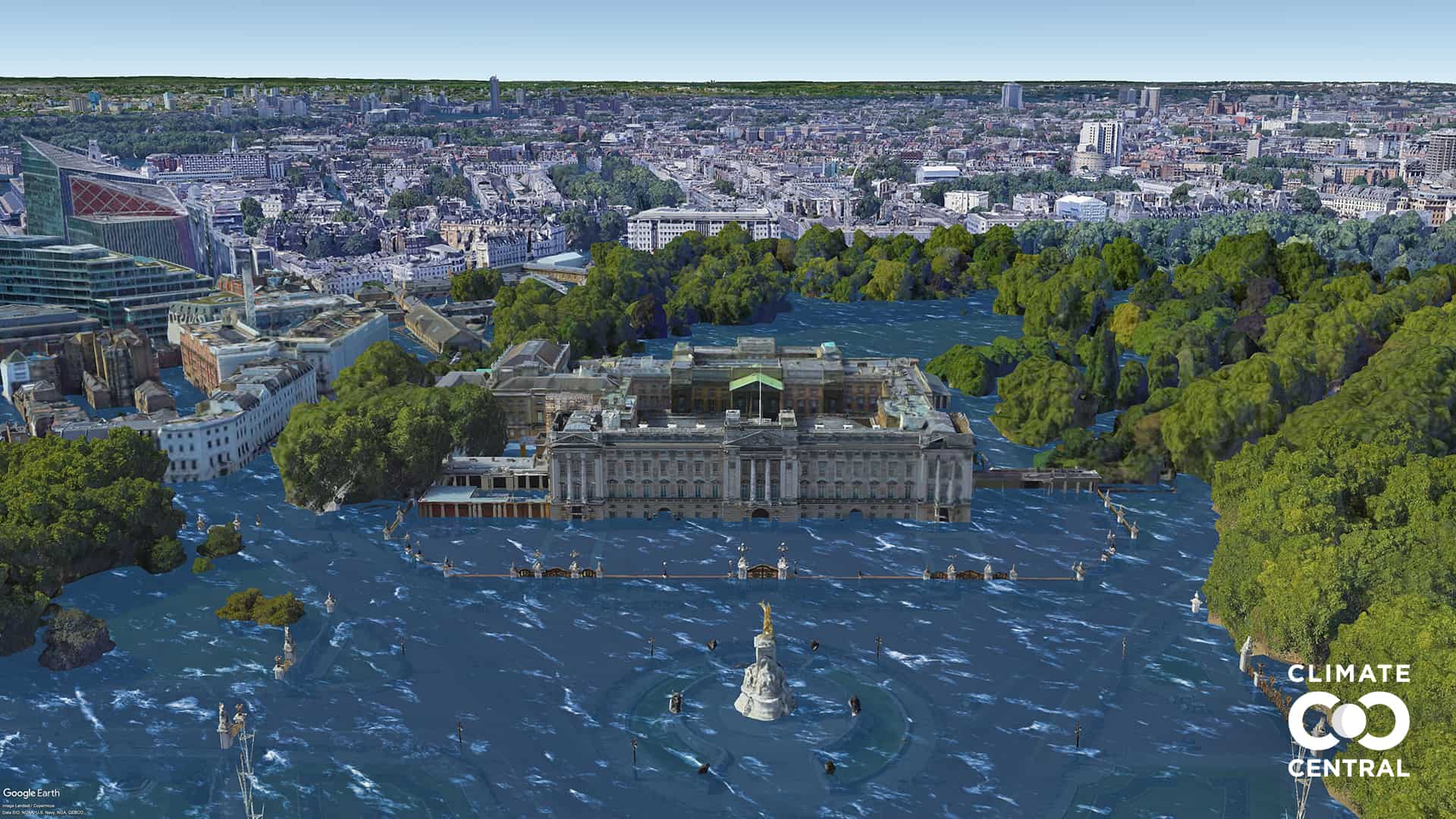
Photo: climatecentral.org
Buckingham Palace is one of the world’s sites which is set to be surrounded by water because of global heating.
A study by environmental group Climate Central shows sea levels rising invading cities like London if world leaders and citizens do no take climate action.
Images show what places like the Tower of London, Seville’s Plaza de España and Dubai’s Burj Khalifa would look like if we keep our carbon emissions as they currently are, leading to a 3C global warming.
A 1.5C global heating is possible instead, if “deep and immediate” cuts are made to our carbon footprint, dropping to half of our current yearly emissions by 2030.
Researchers said hundreds of coastal cities and land are at risk, where up to one billion people live.
About 50 main cities would have to put in place “unprecedented defences” to not lose their land because of sea level rises, and many small island countries are thought to become completely engulfed by water.
The findings come as world leaders are set to meet from 31 October for COP26, a climate change summit held at Glasgow, where they have the opportunity to decide on measures they need to take to reduce the impact of climate change on the future of humanity.
Earlier this year, Boris Johnson’s COP26 finance adviser said the government needs to develop “credible” policies to achieve net-zero carbon emissions.
Carney said: “About three quarters of emissions result from the production and consumption of energy in various sectors.
“This underscores the need to green the production of electricity by shifting to renewables and interchange how we use energy by electrifying as much of our activities as possible, from heating and cooling buildings to transportation.”
Carney said entirely new cement and steel production processes will be required, and new energy technologies will be needed for sectors such as air transport and shipping.
He added across 10 key sectors that account for three-quarters of global emissions, an investment of around $120 trillion is needed over the next three decades to achieve net-zero.
He said: “Half of this amount is needed to transform the power sector and a third to electrify road transport. But significant investment is also required in buildings, aviation, steel, cement, shipping and agriculture. And the majority of this investment needs to happen soon in order to ensure a smooth transition.
“To stabilise temperatures, we have to reach net-zero and to keep the objectives of Paris within reach, to get on the path to stabilise temperatures at 1.5 degrees, emissions need to fall by a minimum of eight per cent, year on year, for the next 20 years.
“Reducing emissions at this pace and scale demands a whole economy transition backed by a plan and funded by mainstream climate finance. 126 countries have committed to net zero and more could join in short order.”
Related: EXCLUSIVE: Carney calls for ‘credible’ policies ahead of COP26